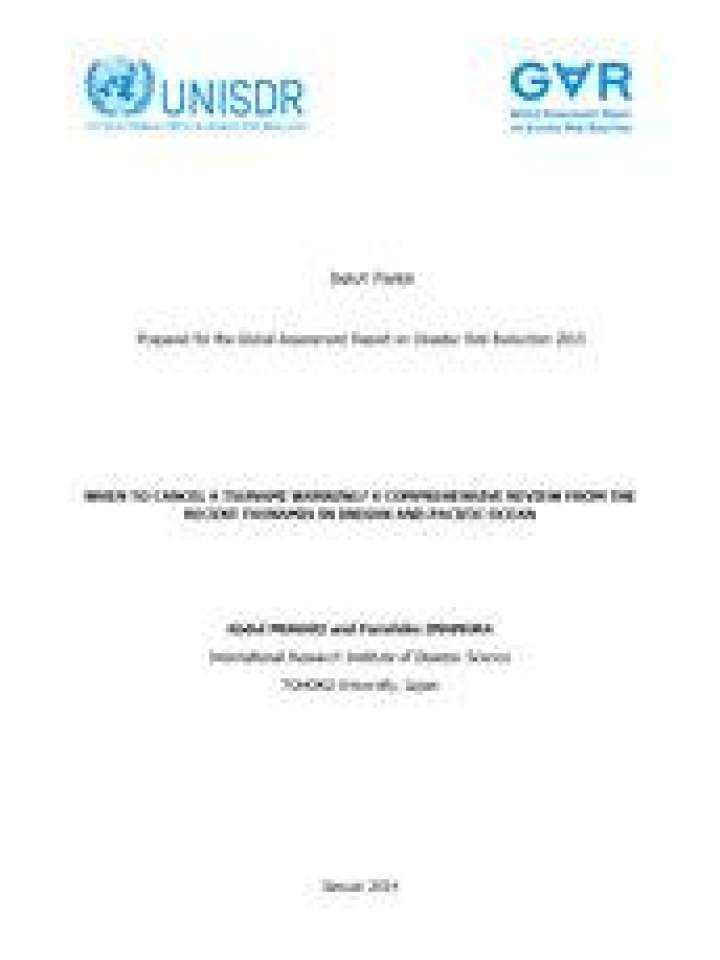When to cancel a tsunami warning
This paper focuses on elaborating on the problems underlying the false termination time in case of tsunami early warning in developing countries. Two tsunami events are analysed namely the 2010 Mentawai tsunami in Sumatra, Indonesia and the impact of the 2011 East Japan tsunami in Papua region, Indonesia.
By using the observed tsunami data from tide gauges and post-tsunami surveys, the authors found that a lack of dissemination and communication facilities, human capacity at the local level and insufficient amount of real time monitoring equipment are the major problems of the unnecessary warning cancellation for both events.
This document also shows that the local scale numerical simulation can be very useful to overcome the absence of real-time monitoring equipment, inadequate capacity of local authorities or in estimating local dynamics to avoid underestimation of the tsunami hazard. The only potential obstacle when applying this concept in developing countries is the availability of detailed topographic data. Thus, a global initiative may be needed to accelerate the availability of such data for developing countries.
This document is an input paper of the 2015 Global Assessment Report on Disaster Risk Reduction.
